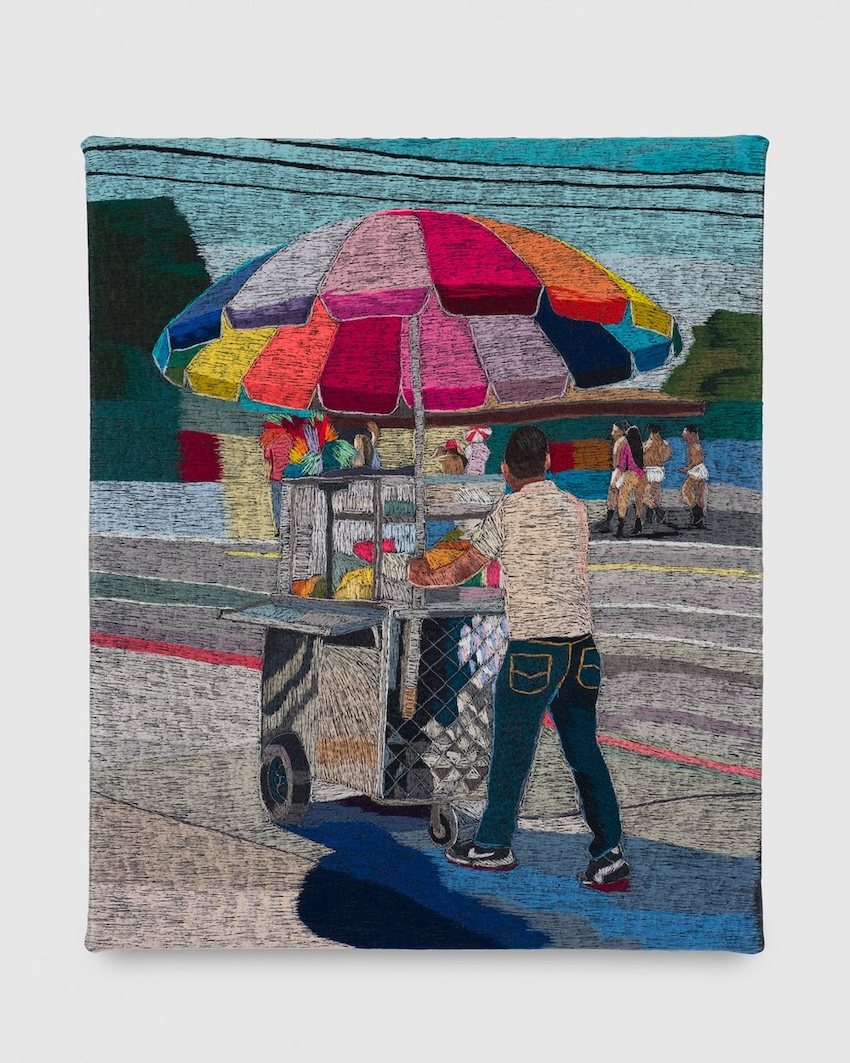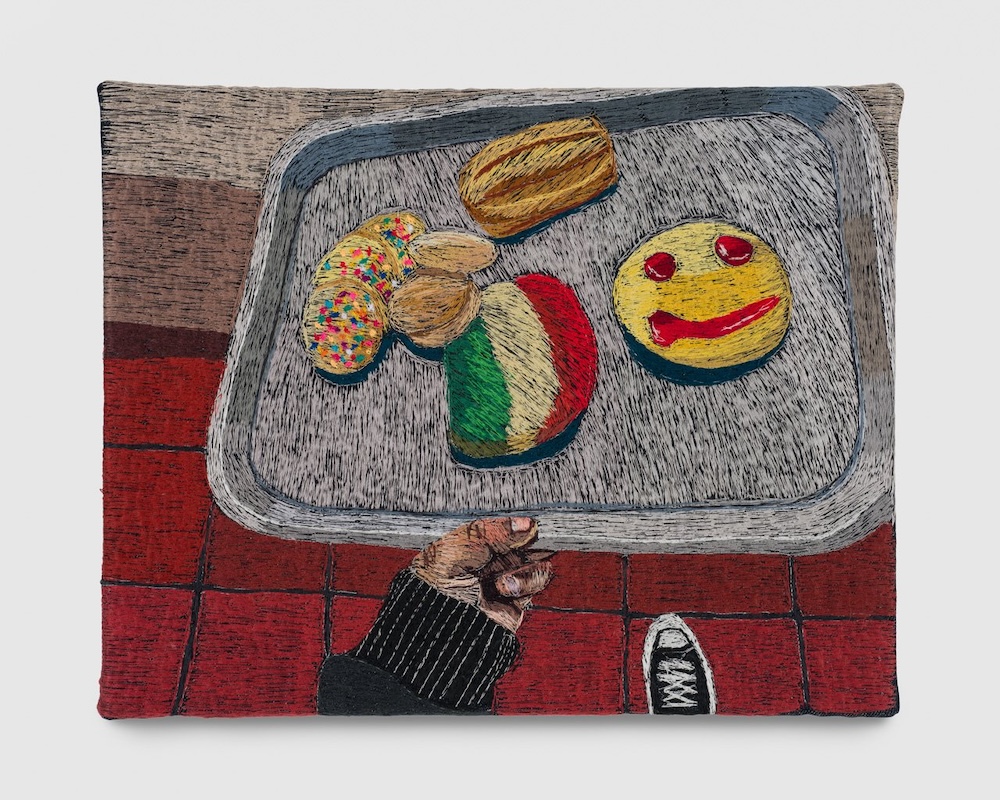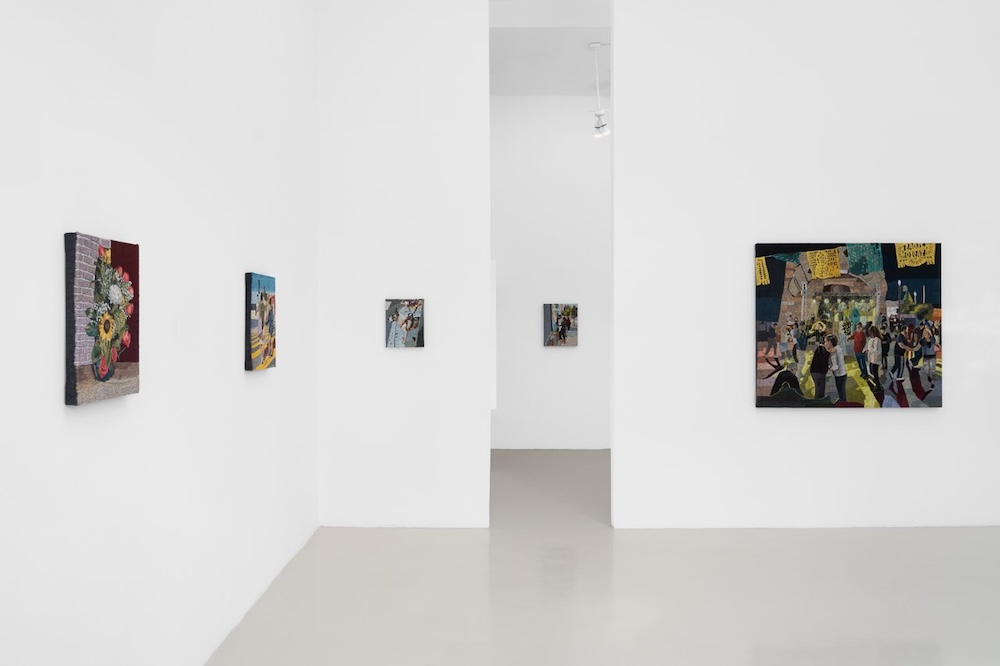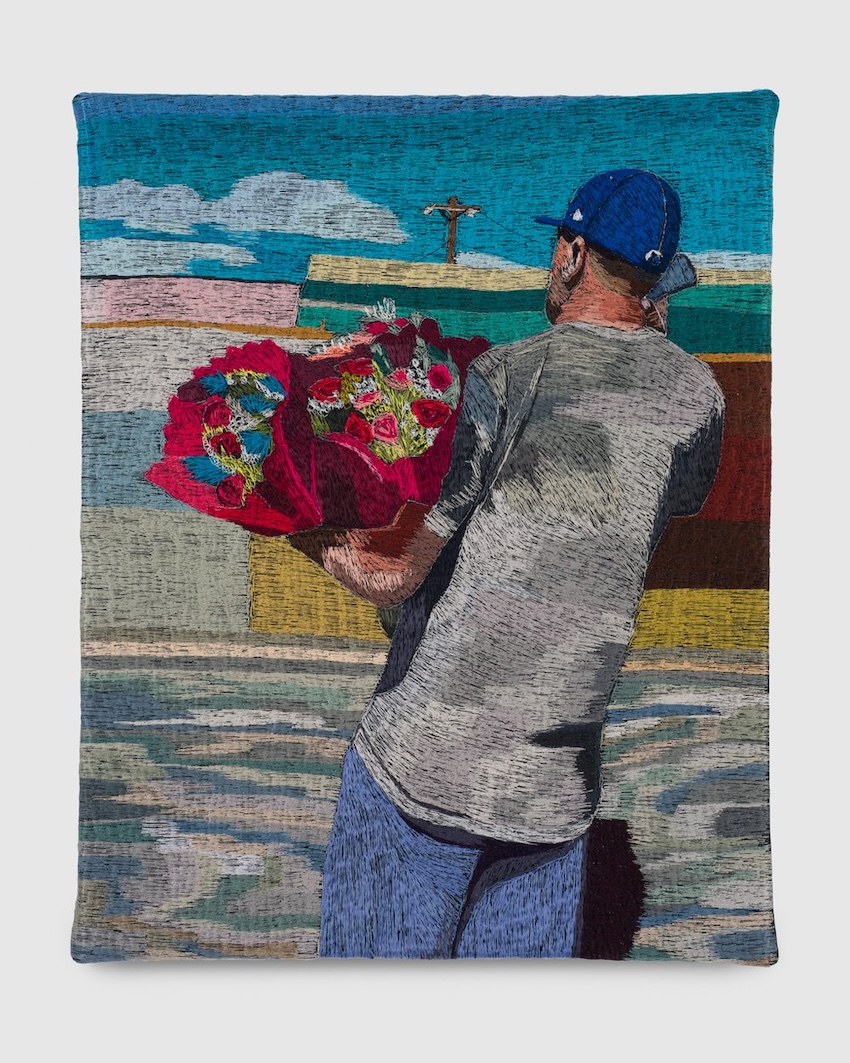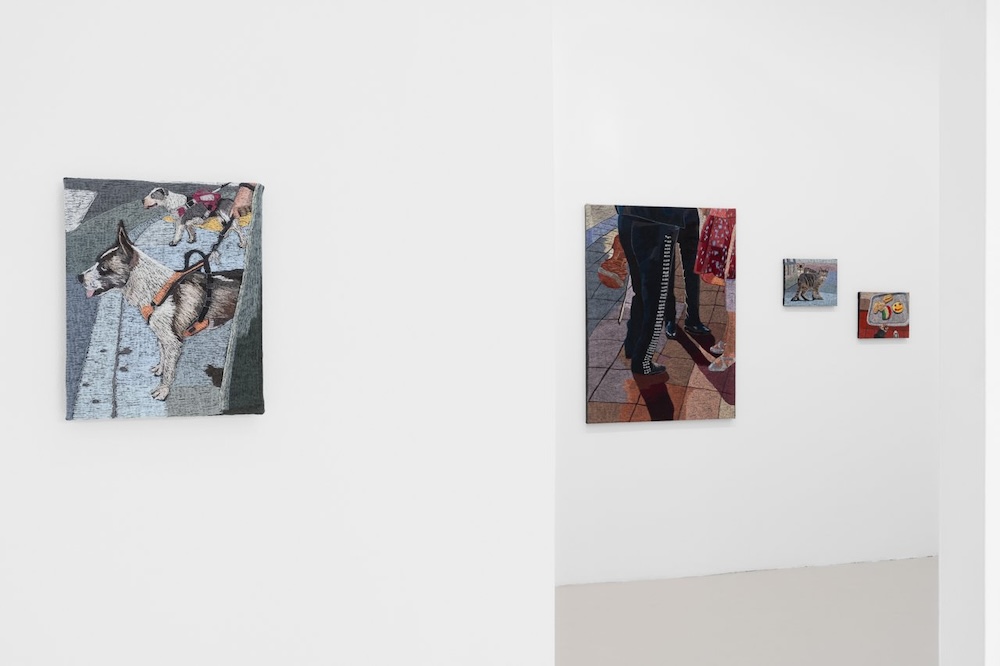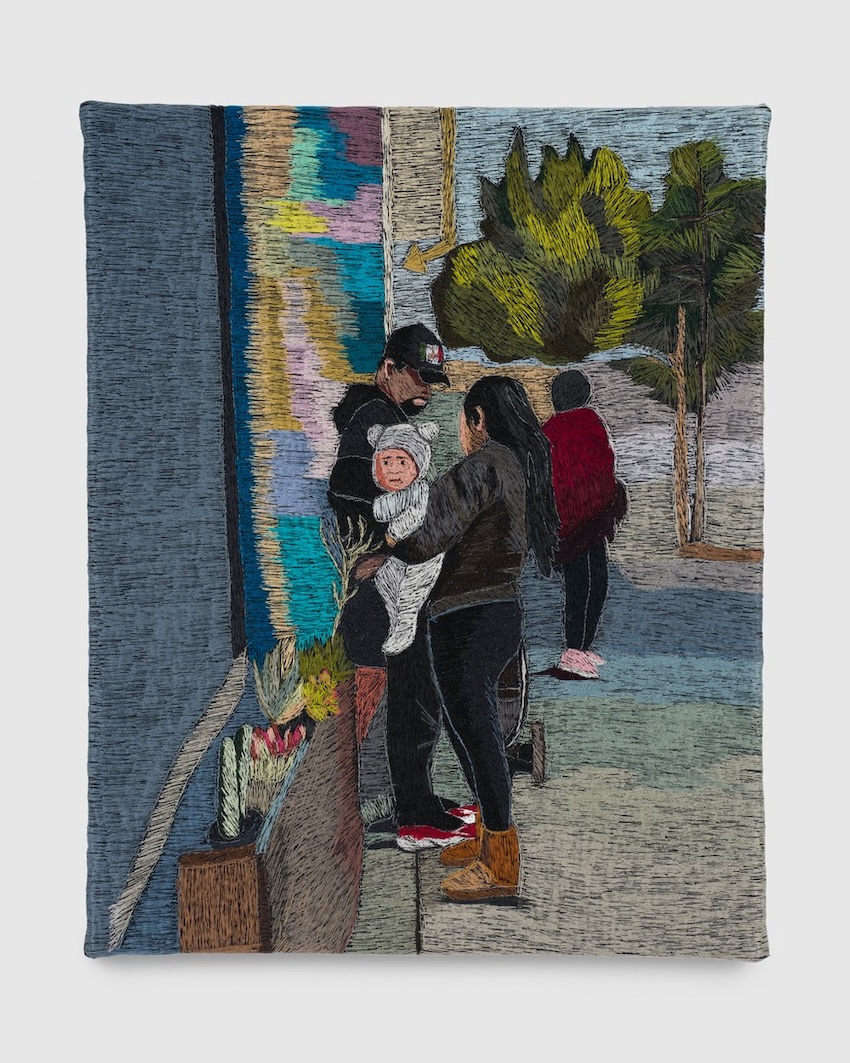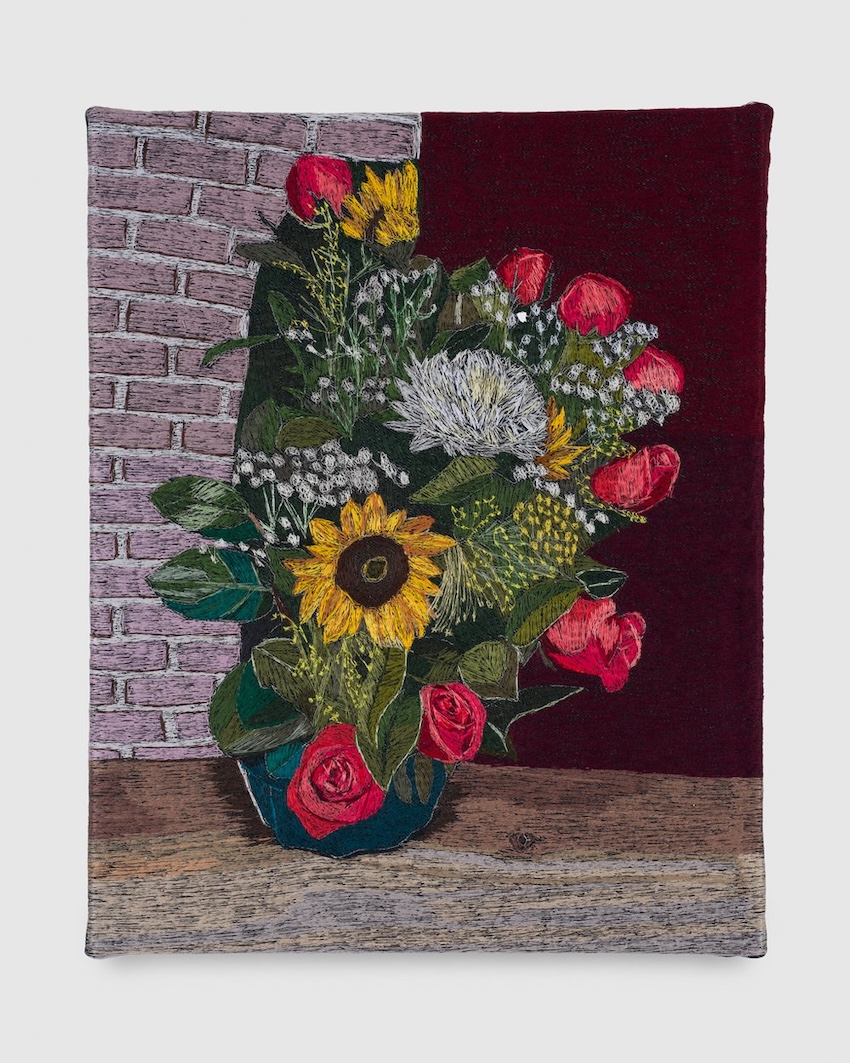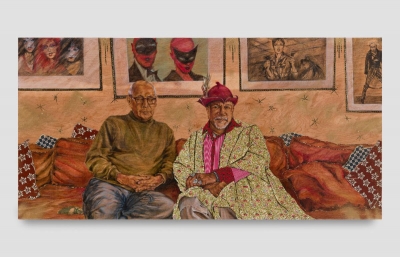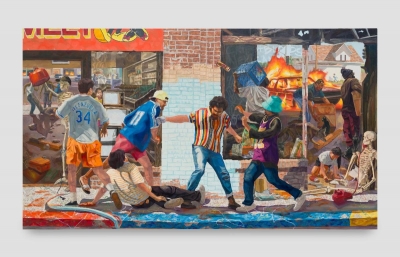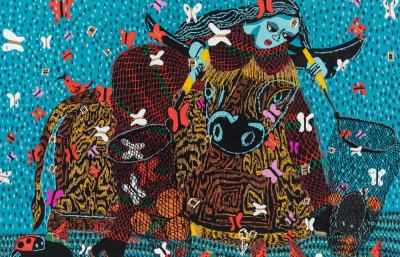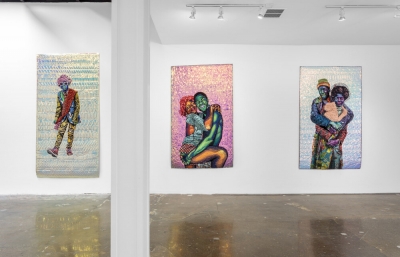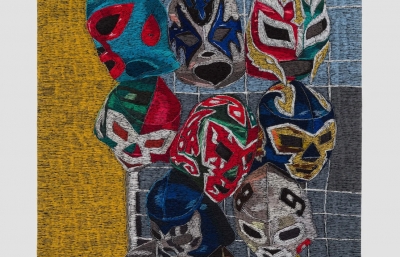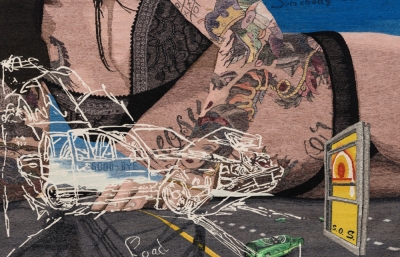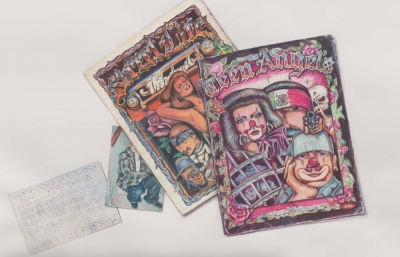Erick Medel doesn't just take pictures, he sews them. Through a unique process involving denim and brightly colored threads, Medel documents through photography his Boyle Heights neighborhood in Los Angeles and finds the most mundane city scenes to then transform into highly detailed works that come from his sewing machine rather than oil paint. On the occasion of his solo show, Vidas, on view at Charlie James Gallery, we talked to Erick about his relationship with his neighborhood as he painstakingly recreates it with thread.
Evan Pricco: I saw a show of yours last year at Rusha & Co, so I had a familiar idea of how you constructed your works, but could you talk a bit about this particular body of work you've prepared here?
Erick Medel: This collection comprises little moments around my studio in Boyle Heights. I take all my own photos and select images that resonate with me. For instance, one piece shows a mother and child crossing the street, which reminds me of my own childhood. Sometimes these moments just find me; I might see a scene on my way back from the store, take a quick photo, and it becomes a piece of art. It's these little moments in the city that inspire me.
So, you capture these moments, bring them back to your studio, and then what? Can you walk me through your process once you start working on these photos?
I start with raw denim canvas, progressing from dark to light. I project the photo outlines and use them as a starting point. While I reference the original photos, my use of colors is more intuitive than exact. I add elements to enhance the image, making lots of choices as I work. The time it takes can vary widely depending on the scale, from weeks to months. A big piece can take me about three months.
Why denim?
I tried many fabrics and stumbled upon denim by chance. It had the right texture and thickness. Denim's history in the US resonated with me. My dad was a gardener and wore denim for its durability, so it has personal significance, too.
Initially, it was utilitarian. But denim’s dark background shows through the stitching, adding another layer to the work. You can see the original denim color and layers of thread building on top, which adds depth to the piece.
Your work has a remarkable 3D element. Can you explain how you achieve that?
Sometimes, the layers aren’t fully flat. I used to make soft sculptures, and over time, my work evolved. Now, I incorporate multiple layers of stitching to create depth.
What drew you to textiles instead of traditional painting?
I started with photography for my degree. For my grad thesis, I made 50 American flags with an industrial sewing machine, which probably was the starting point. I experimented with quilting and soft sculptures and gradually got more comfortable using thread as a medium. During COVID-19, I started using thread more like a pencil on a canvas. It’s been a slow progression to develop depth and refine my technique.
Where did you go to school?
I went to the Rhode Island School of Design for photography. But once there, I explored beyond traditional photography, dabbling in ceramics, sculpture, and other mediums. My professors allowed me the freedom to be an artist, which was crucial.
Were there particular artists or textile influences that shaped your path?
I discovered amazing textile artists like Faith Ringgold later in my career. But I didn't start by wanting to be a textile artist specifically. I prefer to just be known as an artist, exploring various mediums.
Understanding your process better, how much does your work change during creation? Fixing mistakes must be challenging with textiles.
It's mostly intuitive. I'm quite confident with colors, and I edit in the moment as needed, but it's more about trusting the process and making real-time decisions.
Do you think your work is distinctly from Los Angeles?
Definitely. Especially now in East LA, it truly feels like home. The city provides endless inspiration, and I’m constantly finding new moments to capture and elevate through my work.
Did your time in Rhode Island change your perspective on LA and your work?
Yes, being away made me appreciate LA more. East Coast culture is different, and coming back to LA felt inspiring. It solidified my desire to tell these LA stories through my art.
What piece here at Charlie James are you particularly proud of?
I'm very proud of the large piece depicting a night at Mariachi Plaza, entitled Sonidero Night. The scene captures families and individuals celebrating, reminiscent of parties in Mexico. It was a challenging but rewarding project.
I feel like you must have a new appreciation, maybe even a deeper understanding of your surroundings after you take a photo and spend so much time with the sewing aspect after. Like a moment can really resonate after you spend so much time with it.
Spending a lot of time with each piece makes the moments more vivid. I can add elements and color to enhance the memory beyond what’s in the photo, creating a more personal and impactful memory.
My work goes beyond just capturing a moment. It's about transforming and elevating those moments, creating pieces that have a deeper, more personal impact. It’s a way to push photography into a new realm, combining it with other artistic elements.
All my works come from everyday moments I stumble upon. I don’t seek them out deliberately, but they find me. I’m inspired by these moments and the stories they tell about where I live.
Erick Medel's show, Vidas, is on view at Charlie James Gallery in Los Angeles through August 31, 2024.

